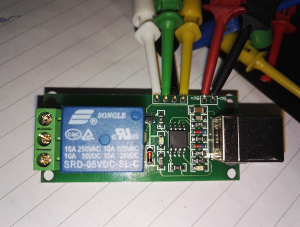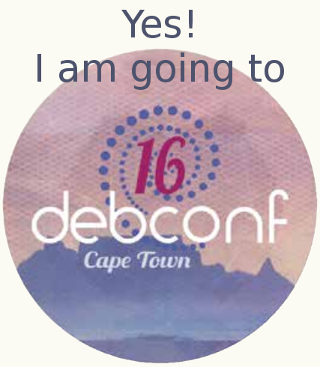Hire me!
It’s rare to be in a position to be able to publicly announce you’re looking for a new job, but as the opportunity is currently available to me I feel I should take advantage of it. That’s especially true given the fact I’ll be at DebConf 16 next week and hope to be able to talk to various people who might be hiring (and will, of course, be attending the job fair).
I’m coming to the end of my Masters in Legal Science and although it’s been fascinating I’ve made the decision that I want to return to the world of tech. I like building things too much it seems. There are various people I’ve already reached out to, and more that are on my list to contact, but I figure making it more widely known that I’m in the market can’t hurt with finding the right fit.
- Availability: August 2016 onwards. I can wait for the right opportunity, but I’ve got a dissertation to write up so can’t start any sooner.
- Location: Preferably Belfast, Northern Ireland. I know that’s a tricky one, but I’ve done my share of moving around for the moment (note I’ve no problem with having to do travel as part of my job). While I prefer an office environment I’m perfectly able to work from home, as long as it’s as part of a team that is tooled up for disperse workers - in my experience being the only remote person rarely works well. There’s a chance I could be persuaded to move to Dublin for the right role.
- Type of role: I sit somewhere on the software developer/technical lead/architect spectrum. I expect to get my hands dirty (it’s the only way to learn a system properly), but equally if I’m not able to be involved in making high level technical decisions then I’ll find myself frustrated.
- Technology preferences: Flexible. My background is backend systems programming (primarily C in the storage and networking spaces), but like most developers these days I’ve had exposure to a bunch of different things and enjoy the opportunity to learn new things.
I’m on LinkedIn and OpenHUB, which should give a bit more info on my previous experience and skill set. I know I’m light on details here, so feel free to email me to talk about what I might be able to specifically bring to your organisation.
Fixing missing text in Firefox
Every now and again I get this problem where Firefox won’t render text correctly (on a Debian/stretch system). Most websites are fine, but the odd site just shows up with blanks where the text should be. Initially I thought it was NoScript, but turning that off didn’t help. Daniel Silverstone gave me a pointer today that the pages in question were using webfonts, and that provided enough information to dig deeper. The sites in question were using Cantarell, via:
src: local('Cantarell Regular'), local('Cantarell-Regular'), url(cantarell.woff2) format('woff2'), url(cantarell.woff) format('woff');
The Firefox web dev inspector didn’t show it trying to fetch the font remotely, so I removed the local() elements from the CSS. That fixed the page, letting me pinpoint the problem as a local font issue. I have fonts-cantarell installed so at first I tried to remove it, but that breaks gnome-core. So instead I did an fc-list | grep -i cant to ask fontconfig what it thought was happening. That gave:
/usr/share/fonts/opentype/cantarell/Cantarell-Regular.otf.dpkg-tmp: Cantarell:style=Regular
/usr/share/fonts/opentype/cantarell/Cantarell-Bold.otf.dpkg-tmp: Cantarell:style=Bold
/usr/share/fonts/opentype/cantarell/Cantarell-Bold.otf: Cantarell:style=Bold
/usr/share/fonts/opentype/cantarell/Cantarell-Oblique.otf: Cantarell:style=Oblique
/usr/share/fonts/opentype/cantarell/Cantarell-Regular.otf: Cantarell:style=Regular
/usr/share/fonts/opentype/cantarell/Cantarell-Bold-Oblique.otf: Cantarell:style=Bold-Oblique
/usr/share/fonts/opentype/cantarell/Cantarell-Oblique.otf.dpkg-tmp: Cantarell:style=Oblique
/usr/share/fonts/opentype/cantarell/Cantarell-BoldOblique.otf: Cantarell:style=BoldOblique
Hmmm. Those .dpkg-tmp files looked odd, and sure enough they didn’t actually exist. So I did a sudo fc-cache -f -v to force a rebuild of the font cache and restarted Firefox (it didn’t seem to work before doing so) and everything works fine now.
It seems that fc-cache must have been run at some point when dpkg had not yet completed installing an update to the fonts-cantarell package. That seems like a bug - fontconfig should probably ignore .dpkg* files, but equally I wouldn’t expect it to be run before dpkg had finished its unpacking stage fully.
First steps with the ATtiny45

These days the phrase “embedded” usually means no console (except, if you’re lucky, console on a UART for debugging) and probably busybox for as much of userspace as you can get away with. You possibly have package management from OpenEmbedded or similar, though it might just be a horrible kludged together rootfs if someone hates you. Either way it’s rare for it not to involve some sort of hardware and OS much more advanced than the 8 bit machines I started out programming on.
That is, unless you’re playing with Arduinos or other similar hardware. I’m currently waiting on some ESP8266 dev boards to arrive, but even they’re quite advanced, with wifi and a basic OS framework provided. A long time ago I meant to get around to playing with PICs but never managed to do so. What I realised recently was that I have a ready made USB relay board that is powered by an ATtiny45. First step was to figure out if there were suitable programming pins available, which turned out to be all brought out conveniently to the edge of the board. Next I got out my trusty Bus Pirate, installed avrdude and lo and behold:
$ avrdude -p attiny45 -c buspirate -P /dev/ttyUSB0
Attempting to initiate BusPirate binary mode...
avrdude: Paged flash write enabled.
avrdude: AVR device initialized and ready to accept instructions
Reading | ################################################## | 100% 0.01s
avrdude: Device signature = 0x1e9206 (probably t45)
avrdude: safemode: Fuses OK (E:FF, H:DD, L:E1)
avrdude done. Thank you.
Perfect. I then read the existing flash image off the device, disassembled it, worked out it was based on V-USB and then proceeded to work out that the only interesting extra bit was that the relay was hanging off pin 3 on IO port B. Which led to me knocking up what I thought should be a functionally equivalent version of the firmware, available locally or on GitHub. It’s worked with my basic testing so far and has confirmed to me I understand how the board is set up, meaning I can start to think about what else I could do with it…
Notes on Kodi + IR remotes
This post is largely to remind myself of the details next time I hit something similar; I found bits of relevant information all over the place, but not in one single location.
I love Kodi. These days the Debian packages give me a nice out of the box experience that is easy to use. The problem comes in dealing with remote controls and making best use of the available buttons. In particular I want to upgrade the VDR setup my parents have to a more modern machine that’s capable of running Kodi. In this instance an AMD E350 nettop, which isn’t recent but does have sufficient hardware acceleration of video decoding to do the job. Plus it has a built in fintek CIR setup.
First step was finding a decent remote. The fintek is a proper IR receiver supported by the in-kernel decoding options, so I had a lot of flexibility. As it happened I ended up with a surplus to requirements Virgin V Box HD remote (URC174000-04R01). This has the advantage of looking exactly like a STB remote, because it is one.
Pointed it at the box, saw that the fintek_cir module was already installed and fired up irrecord. Failed to get it to actually record properly. Googled lots. Found ir-keytable. Fired up ir-keytable -t and managed to get sensible output with the RC-5 decoder. Used irrecord -l to get a list of valid button names and proceed to construct a vboxhd file which I dropped in /etc/rc_keymaps/. I then added a
fintek-cir * vboxhd
line to /etc/rc_maps.cfg to force my new keymap to be loaded on boot.
That got my remote working, but then came the issue of dealing with the fact that some keys worked fine in Kodi and others didn’t. This seems to be an issue with scancodes above 0xff. I could have remapped the remote not to use any of these, but instead I went down the inputlirc approach (which is already in use on the existing VDR box).
For this I needed a stable device file to point it at; the /dev/input/eventN file wasn’t stable and as a platform device it didn’t end up with a useful entry in /dev/input/by-id. A ‘quick’
udevadm info -a -p $(udevadm info -q path -n /dev/input/eventN)
provided me with the PNP id (FIT0002) allowing me to create /etc/udev/rules.d/70-remote-control.rules containing
KERNEL=="event*",ATTRS{id}=="FIT0002",SYMLINK="input/remote"
Bingo, a /dev/input/remote symlink. /etc/defaults/inputlirc ended up containing:
EVENTS="/dev/input/remote"
OPTIONS="-g -m 0"
The options tell it to grab the device for its own exclusive use, and to take all scancodes rather than letting the keyboard ones through to the normal keyboard layer. I didn’t want anything other than things specifically configured to use the remote to get the key presses.
At this point Kodi refused to actually do anything with the key presses. Looking at ~kodi/.kodi/temp/kodi.log I could see them getting seen, but not understood. Further searching led me to construct an Lircmap.xml - in particular the piece I needed was the <remote device="/dev/input/remote"> bit. The existing /usr/share/kodi/system/Lircmap.xml provided a good starting point for what I wanted and I dropped my generated file in ~kodi/.kodi/userdata/.
(Sadly it turns out I got lucky with the remote; it seems to be using the RC-5x variant which was broken in 3.17; works fine with the 3.16 kernel in Debian 8 (jessie) but nothing later. I’ve narrowed down the offending commit and raised #117221.)
Helpful pages included:
Going to DebConf 16

Whoop! Looking forward to it already (though will probably spend it feeling I should be finishing my dissertation).
Outbound:
2016-07-01 15:20 DUB -> 16:45 LHR BA0837
2016-07-01 21:35 LHR -> 10:00 CPT BA0059
Inbound:
2016-07-10 19:20 CPT -> 06:15 LHR BA0058
2016-07-11 09:20 LHR -> 10:45 DUB BA0828
(image stolen from Gunnar)
subscribe via RSS